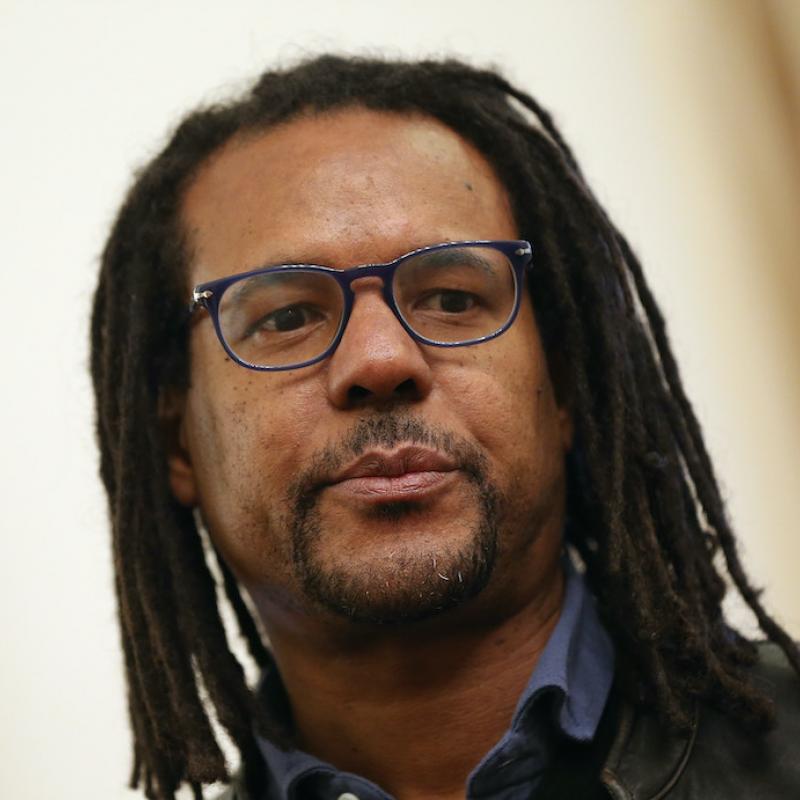Contributor
Related Topic
Other segments from the episode on July 16, 2019
Transcript
TERRY GROSS, HOST:
This is FRESH AIR. "Jazz From Detroit" is the title of a new book by journalist and critic Mark Stryker, who spent a couple of decades covering jazz and its people in that city. Our jazz critic Kevin Whitehead says Stryker looks at Detroiters who made their mark in the larger world and a few who stayed behind. Here's Kevin's review.
(SOUNDBITE OF JAMES CARTER'S "FREE AND EASY")
KEVIN WHITEHEAD, BYLINE: Saxophonist James Carter at Baker's Keyboard Lounge in Detroit in 2001.
Throughout the city's boom and bust decades since World War II, Detroit has trained more than its share of high-performance jazz musicians - saxophonists like Carter, Joe Henderson, Yusef Lateef and Charles McPherson; or pianists like Barry Harris, Hank Jones, Tommy Flanagan, Roland Hanna and Geri Allen; or drummers like Elvin Jones, Louis Hayes, Gerald Cleaver - and we're already skipping key players before moving on to other instruments.
Most of these jazz stars broke through in New York. But even there, Detroiters stuck together, pulling colleagues into high-profile bands and using the old gang on records. On a 1957 John Coltrane jam session, the whole rhythm section was from Detroit - Kenny Burrell on guitar, Tommy Flanagan on piano, Doug Watkins on bass and Louis Hayes on drums. Typical of the city's boppers, they swing hard, but their beat can be open and airy.
(SOUNDBITE OF TOMMY FLANAGAN, KENNY BURRELL AND JOHN COLTRANE'S "MINOR MISHAP")
WHITEHEAD: I am hearing such musicians with fresh ears since reading Mark Stryker's very informative and readable new book "Jazz From Detroit." Stryker spent a couple of decades covering jazz and its people for the Detroit Free Press. He has a good reporter's eye and a good critic's ear for the telling detail on the particulars of a musician's art. His tone is positive, but he's not blind to racist realities.
Detroit's best are mostly African American. The white boppers, like singer Sheila Jordan and saxophonist Pepper Adams, were welcome. Detroit standards are high, and musicians are encouraged to find their own sound. Stryker shows how Detroit's bebop-drenched scene grew up, supported by good public school music programs and a few dedicated teachers outside the classroom.
Bop pianist Barry Harris mentored just about all the modernists who came up behind him till he left for New York in 1960. Later, he began schooling musicians there. Here's Harris in 1965.
(SOUNDBITE OF COLEMAN HAWKINS' "SHE'S FIT")
WHITEHEAD: Barry Harris and Detroit drummer Eddie Locke with saxophonist Coleman Hawkins.
The book "Jazz From Detroit" isn't just about musicians who left, but also ones who remained - some old-school boppers, 1960s and '70s avant-gardists and diverse young lions who started coming up in the '80s. The old support system continued much as before, with new teachers rising up.
Foremost was a trumpet player and classic jazz stay-at-home who tried New York, but found it cold and clique-ish - Marcus Belgrave. Here's Belgrave in 2012 from the Blue Note anthology "Detroit Jazz City."
(SOUNDBITE OF MARCUS BELGRAVE'S "LOTTIE THE BODY'S MOOD")
WHITEHEAD: In the book "Jazz From Detroit," Mark Stryker profiles Marcus Belgrave and seven younger musicians he'd helped, including saxophonist Kenny Garrett, violinist Regina Carter and drummer and hip-hop producer Karriem Riggins. Some Belgrave proteges then took up educating young musicians themselves - professors like Geri Allen or bassists Bob Hirst and Rodney Whitaker.
As ever, Stryker squeezes in concise appraisals of key recordings, and he notes changes to an artist's sound over time. He's got big ears and can turn a phrase. His method echoes the great jazz chronicler Stanley Dance, who, in classic books like "The World Of Duke Ellington," used interview-based profiles to assemble a mosaic portrait of a larger scene. That's what Mark Stryker does in "Jazz From Detroit." He tells a lot of individual stories that add up to one big one.
(SOUNDBITE OF KENNY BARRON AND REGINA CARTER'S "SQUATTY ROO")
GROSS: Kevin Whitehead writes for Point of Departure and The Audio Beat. He reviewed the new book "Jazz From Detroit" by Mark Stryker.
Tomorrow on FRESH AIR, my guest will be Randy Rainbow, who writes and performs political song parodies, mostly about President Trump. Rainbow writes original lyrics set to melodies of show tunes and pop music hits. His videos go viral on YouTube, and next month, he'll go back on tour. I hope you'll join us.
FRESH AIR's executive producer is Danny Miller. Our interviews and reviews are produced and edited by Amy Salit, Phyllis Myers, Sam Briger, Lauren Krenzel, Heidi Saman, Therese Madden, Mooj Zadie, Thea Chaloner and Seth Kelley. I'm Terry Gross.
(SOUNDBITE OF KENNY BARRON AND REGINA CARTER'S "SQUATTY ROO") Transcript provided by NPR, Copyright NPR.

